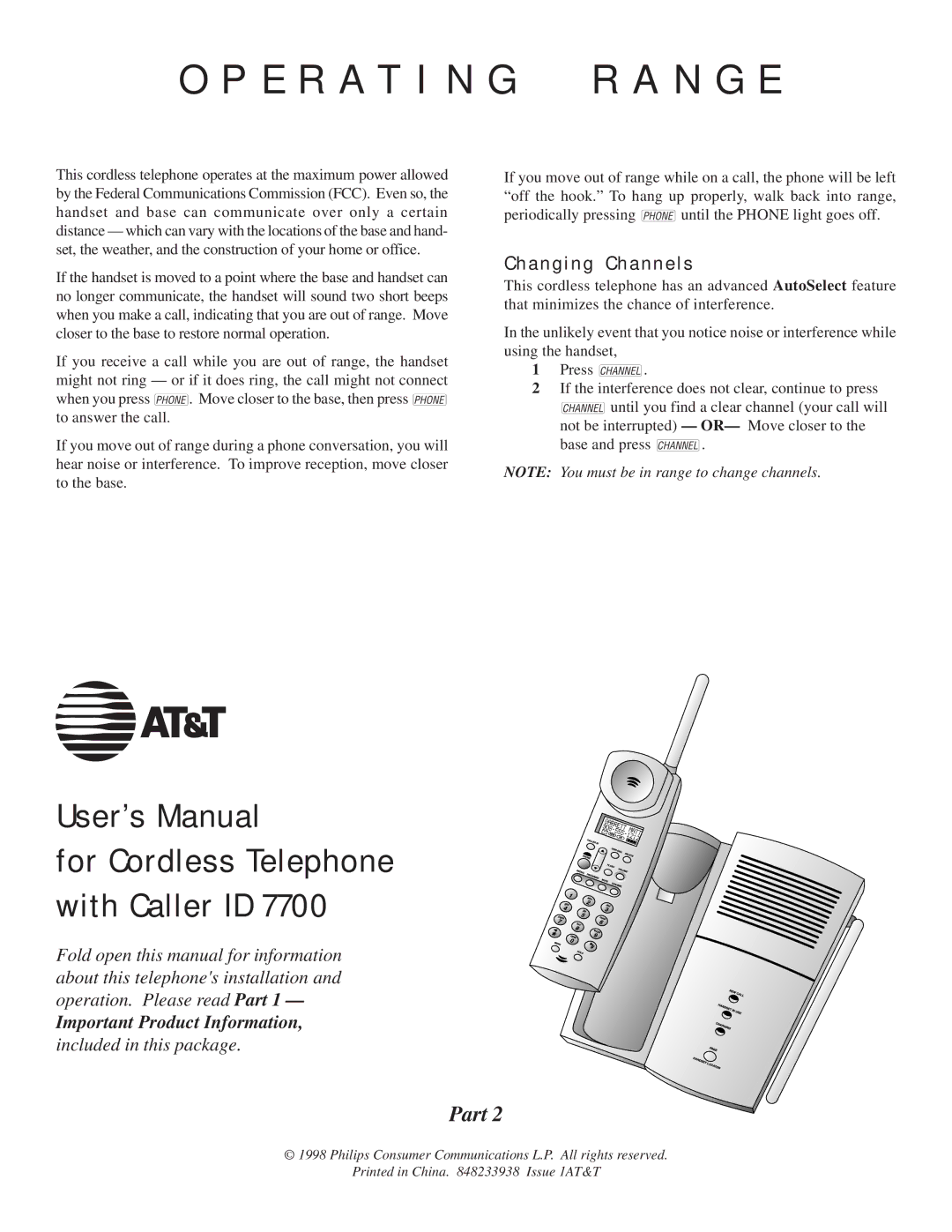
O P E R A T I N G R A N G E
This cordless telephone operates at the maximum power allowed by the Federal Communications Commission (FCC). Even so, the handset and base can communicate over only a certain distance — which can vary with the locations of the base and hand- set, the weather, and the construction of your home or office.
If the handset is moved to a point where the base and handset can no longer communicate, the handset will sound two short beeps when you make a call, indicating that you are out of range. Move closer to the base to restore normal operation.
If you receive a call while you are out of range, the handset might not ring — or if it does ring, the call might not connect when you press P. Move closer to the base, then press P to answer the call.
If you move out of range during a phone conversation, you will hear noise or interference. To improve reception, move closer to the base.
If you move out of range while on a call, the phone will be left “off the hook.” To hang up properly, walk back into range, periodically pressing Puntil the PHONE light goes off.
Changing Channels
This cordless telephone has an advanced AutoSelect feature that minimizes the chance of interference.
In the unlikely event that you notice noise or interference while using the handset,
1Press C.
2If the interference does not clear, continue to press Cuntil you find a clear channel (your call will
not be interrupted) — OR— | Move closer to the |
base and press C. |
|
NOTE: You must be in range to change channels.
2
User’s Manual
for Cordless Telephone with Caller ID 7700
Fold open this manual for information about this telephone's installation and
operation. Please read Part 1 —
Important Product Information,
included in this package.
Part 2
© 1998 Philips Consumer Communications L.P. All rights reserved.
Printed in China. 848233938 Issue 1AT&T
